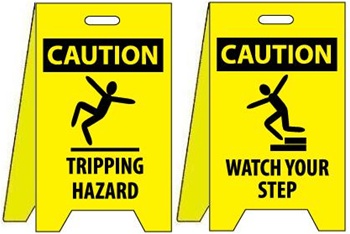- Reduce waste
- Recycle
- Turning off unneeded lighting or electrical appliances
- Sharing a ride to work or taking public transport
- Reuse old paper
- Choosing environmentally friendly appliances or computer technology
Examples of inspection checklists used to collect and measure relevant information on organisation resource consumption, within work role provided.
1. Inspection list
2. Maintenance review
3. Records of maintanence/inspections


Sound knowledge of environmental and resource hazards/risks in your work area. At least three examples are provided.
1. Construction (asbestos)- can affect many buildings and should be addressed to protect the health of employees.
2. Electronic waste (e-waste) just sitting around the office. It's not safe to have unwanted computers or any electronic devices just laying around for people to either trip on or allow the waste to increase. The more waste you have laying, the more objects there are to get in your way while navigating around the workplace.
3. Clinical waste (syringes and medication) - Any kind of dirty object that can transmit disease or infections should be thrown immediately in proper containers or bins.
Appropriate level of knowledge of WHS issues and requirements in relation to sustainability practice in your work area demonstrated.
There can be issues with:
- Negligence within the workplace
- Not enough training
- Lacking enforcement on polices
For example, forgetting to put up a sign warning people of slippery floors that have just been mopped or throwing employees into the deep end without proper training on how to use equipment.
Knowledge of organisational structure, and reporting channels and procedures in relation to sustainable practice at your workplace. (who do you report to)
You may need to report to the manager/supervisor or team leader. E.g. You notice people at work are neglecting to recycle their left over containers and boxes. You speak to manager and discuss a way to remind co-workers to be more environmentally aware.
Understands and is able to use relevant environmental and resource efficiency systems and procedures in own work area.
- Site Risk assessment
- Environmental management system
- Waste Disposal receipts
- Site audit
- Environmental improvement plan
- Record of inspections
Satisfactory examples of how policy for environmental sustainability that may impact on your job role. Clearly linked to environmental legislation.
- Environmental Protection & Biodiversity Conservation Act (EPBCA) 1999
This can stop certain companies of neglectful behaviour towards the environment such as factories.
There would be limits or procedures you would have to go through when hosting an event outdoors. For example, not damaging native flora and fauna, or using heritage places without permission.
- Protection of the Environment Operations Act 1997
This means generally being careful not pollute the air or land. Disturbance towards neighbours, waste offenders, failing to notify about illegal activity that may cause harm towards environment. E.g. A piece of legislation like this can influence how companies throw out waste and means licensing or permission to use outdoor venues would be needed.
Demonstrates the ability/initiative to make improvements to own work area. Several examples provided.
- Creating environment posters
- Maintain regular maintenance/inspections
- Site risk assessments
- Colour coded bins for recycle and normal rubbish
- Seminar on Environmentally Sustainable Work practices
- Turning off technology after it's no longer needed




